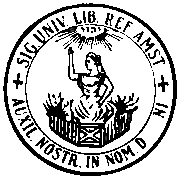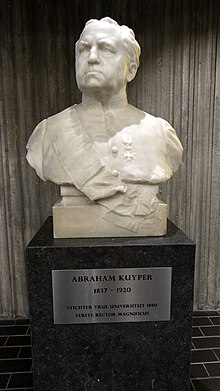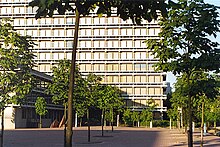
Utrecht University is a public research university in Utrecht, Netherlands. Established 26 March 1636, it is one of the oldest universities in the Netherlands. In 2022, it had an enrollment of 37,675 students, and employed 8,584 faculty members and staff. More than 400 PhD degrees were awarded and 8,500 scientific articles were published. The university's 2022 budget was €2.606 billion, consisting of €1.067 billion for the university and €1.539 billion for the University Medical College Utrecht.

Leiden University is a public research university in Leiden, Netherlands. It was founded as a Protestant university in 1575 by William, Prince of Orange, making it the oldest institution of higher education in the Netherlands.

Jelle Zijlstra was a Dutch politician of the defunct Anti-Revolutionary Party (ARP) now the Christian Democratic Appeal (CDA) party and economist who served as Prime Minister of the Netherlands from 22 November 1966 until 5 April 1967.
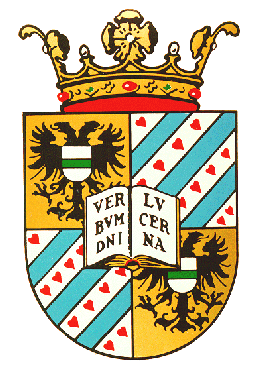
The University of Groningen is a public research university of more than 30,000 students in the city of Groningen in the Netherlands. Founded in 1614, the university is the second oldest in the country and one of the most traditional and prestigious universities in the Netherlands.

The Vrije Universiteit Brussel is a Dutch and English-speaking research university located in Brussels, Belgium. It has four campuses: Brussels Humanities, Science and Engineering Campus, Brussels Health Campus, Brussels Technology Campus and Brussels Photonics Campus.
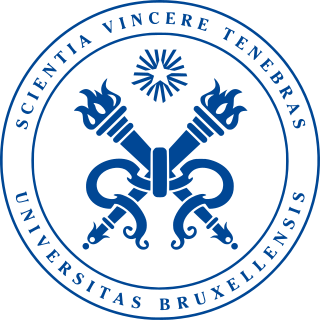
The Université libre de Bruxelles is a French-speaking research university in Brussels, Belgium. ULB is one of the two institutions tracing their origins to the Free University of Brussels, founded in 1834 by the lawyer and liberal politician Pierre-Théodore Verhaegen.
Maastricht University is a public research university in Maastricht, Netherlands. Founded in 1976, it is the second youngest of the thirteen Dutch universities.

The University of Amsterdam is a public research university located in Amsterdam, Netherlands. Established in 1632 by municipal authorities, it is the fourth-oldest academic institution in the Netherlands still in operation.

Radboud University (abbreviated as RU, Dutch: Radboud Universiteit, formerly Katholieke Universiteit Nijmegen) is a public research university located in Nijmegen, the Netherlands. The university bears the name of Saint Radboud, a 9th-century Dutch bishop who was known for his intellect and support of the underprivileged.

Erasmus University Rotterdam is a public research university located in Rotterdam, Netherlands. The university is named after Desiderius Erasmus Roterodamus, a 15th-century Christian humanist and theologian.
The Katholieke Universiteit Leuven Associatie Kortrijk, or Kulak for short, is a university satellite campus of the KU Leuven in the city of Kortrijk (Courtrai) in the Belgian province of West Flanders and is therefore also officially a Dutch-speaking institution.

VU University Medical Center Amsterdam is the university hospital affiliated with the Vrije Universiteit Amsterdam. It is rated one of the best academic medical centers in the country in terms of patient care and research. It is located next to Amsterdam's A10 ringway in the southwestern part of the city, next to the campus of the Vrije Universiteit and close to Schiphol airport.

Mariëtte "Jet" Bussemaker is a retired Dutch politician. A member of the Labour Party (PvdA), she served as Minister of Education, Culture and Science from 5 November 2012 to 26 October 2017 in the Second Rutte cabinet. She has been a professor of Science, Policy, Social Impact and Healthcare at Leiden University since 1 July 2018.

Peter Nijkamp is a Dutch economist, Professor of Regional Economics and Economic Geography at the Vrije Universiteit, Amsterdam, the Netherlands, a fellow of the Tinbergen Institute and President of the Governing Board of the Netherlands Research Council (NWO). He is ranked among the top 100 economists in the world according to IDEAS/RePEc, and is by far the most prolific economist. Towards the end of his career at the VU university Nijkamp faced accusations of self-plagiarism and VU-appointed investigators have criticised referencing methods in some of his work.
Pieter (Piet) Rietveld was a Dutch economist and Professor in Transport Economics at the Vrije Universiteit, Amsterdam, and a fellow at the Tinbergen Institute. He was among the top researchers in economic geography according to IDEAS/RePEc.

Amsterdam University College (AUC) is a public liberal arts college in the Netherlands with an enrollment of about 900 students from more than 60 countries. All teaching is in English.

The Duisenberg School of Finance (DSF) was an educational organization in the Netherlands. It offered Master's level education in finance between 2008 and 2015. The school was launched as a collaborative initiative between the Dutch financial sector in conjunction with local and international academic institutions. Amongst others, the founders of the initiative were Nout Wellink and Minister of the Economic Affairs, Maria van der Hoeven. The name was chosen by the founders to honor Wim Duisenberg, the first President of the European Central Bank.

Philip Scheltens is a Dutch professor of neurology and founder of the Alzheimer Centre, Amsterdam University Medical Centers, location VUmc in Amsterdam.

Danielle Posthuma is a Dutch behavior and psychiatric geneticist who specializes in statistical genetics. She is a University Research Chair professor at VU University Amsterdam, where she is also head of the Department of Complex Trait Genetics. She has been a member of the Young Academy of the Royal Dutch Academy of Sciences since 2005. She is known for studying the genetics of psychiatric and cognitive traits, including schizophrenia, neuroticism, Alzheimer's disease, insomnia, as well as genetics of intelligence, which she first became interested in researching in the 1990s. In 2019 Posthuma became a member of the Royal Netherlands Academy of Arts and Sciences.

Amsterdam University Medical Center, often shortened to Amsterdam UMC, is a collective of two teaching hospitals in Amsterdam. Formed, in 2018, after the administrative merger of the city's two university medical centers: the Academic Medical Center and the VU University Medical Center.
